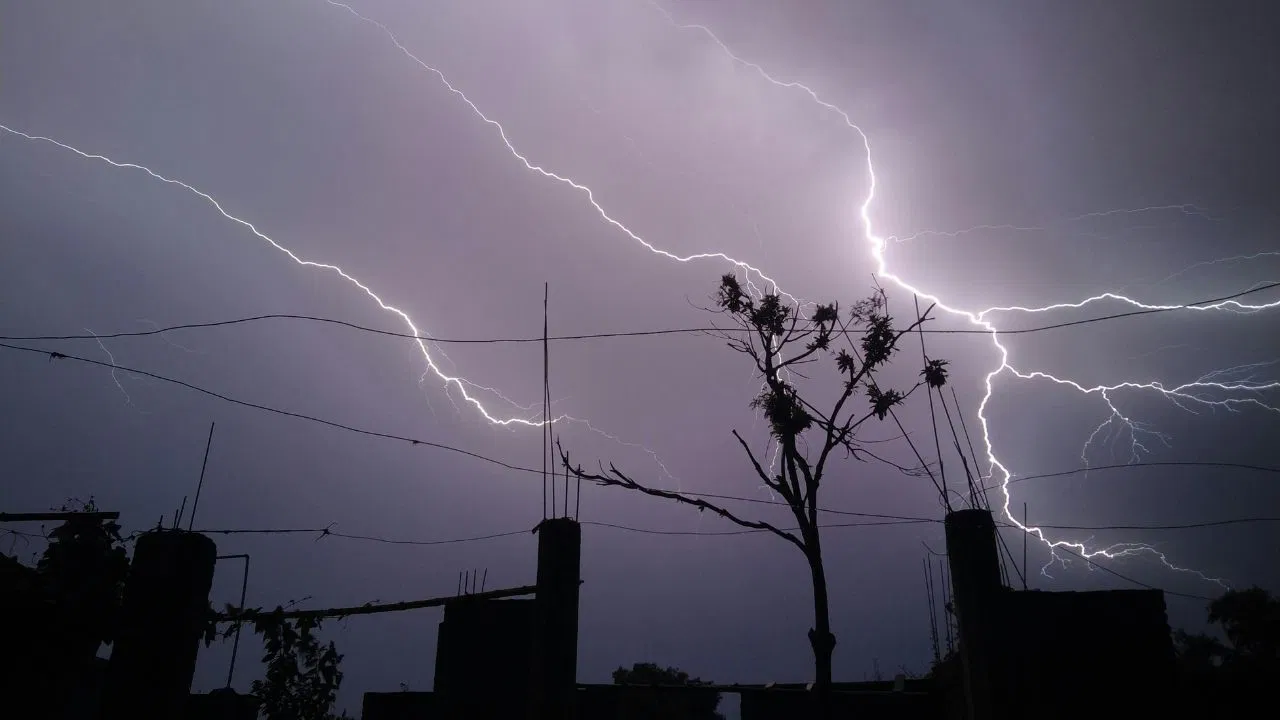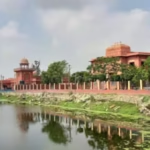After weeks of intense summer heat, Delhi residents are finally experiencing the much-anticipated relief brought by the monsoon. Thunderstorms accompanied by light rain have started sweeping through various parts of the national capital, bringing down temperatures and significantly improving air quality.
Arrival of Monsoon: A Slight Delay but Much-Needed Relief
The monsoon typically reaches Delhi around June 27. This year, however, it arrived slightly late, making its entry on June 29. While a two-day delay may seem minor, the scorching pre-monsoon heatwave had left many Delhiites eagerly waiting for the first drops of rain.
Meteorological data from the India Meteorological Department (IMD) confirms that the southwest monsoon has finally covered the entire Delhi-NCR region. Rainfall was first reported in areas like Palam, Ayanagar, Lodhi Road, and Rajghat, with Palam recording nearly 14 millimeters of rain in a single day.
The IMD has also issued a yellow alert for the coming days, indicating more light to moderate showers accompanied by thunderstorms and gusty winds. According to weather experts, the rain activity is expected to continue at least until July 5, offering consistent respite from the oppressive summer heat.
Today’s Weather Snapshot
As of July 1, Delhi is experiencing humid conditions with overcast skies. The day’s maximum temperature is expected to hover around 34 degrees Celsius, while the minimum temperature remains close to 28 degrees Celsius. The city witnessed intermittent rainfall in the early morning hours, and light rain is likely to continue throughout the day.
Gusty winds, reaching speeds of up to 40 to 50 kilometers per hour, are also expected in some parts of the city. These strong winds, along with the rains, have helped in clearing out the dust and pollutants that typically hover over the Delhi skies during the summer months.
Improvement in Air Quality: A Welcome Change
One of the most noticeable and appreciated effects of the recent rainfall has been the dramatic improvement in air quality. Delhi’s Air Quality Index (AQI) has dropped into the “satisfactory” category for the first time in several weeks.
As per the Central Pollution Control Board (CPCB), the city’s AQI on July 1 was recorded at 65, which falls well within the satisfactory range of 51 to 100. This marks a significant improvement compared to the “moderate” and “poor” categories that Delhi has been experiencing through most of May and June.
The rain has played a crucial role in washing away airborne pollutants and settling dust particles. Additionally, the drop in temperature and increase in humidity have contributed to the dispersal of smog and ground-level ozone.
The Science Behind Cleaner Air During Monsoon
Monsoon rains naturally clean the atmosphere by trapping particulate matter and other air pollutants and bringing them down to the ground. The increased humidity also prevents dust from rising again, keeping pollution levels low.
Furthermore, the wind patterns that accompany monsoon systems help disperse pollutants over a wider area, reducing their concentration in urban environments. These combined effects often result in Delhi experiencing some of its cleanest air days during the monsoon season.
However, experts warn that this clean air is temporary and primarily weather-dependent. Without structural changes in pollution control, the city is likely to revert to higher pollution levels once the monsoon subsides.
Forecast for the Week Ahead
Delhi residents can expect more wet weather in the days ahead. The IMD’s extended forecast suggests that the capital will continue to see light to moderate rainfall accompanied by thunderstorms at least until July 5.
Here’s a day-wise outlook for the coming week:
- July 1: Cloudy skies with light rain and isolated thunderstorms throughout the day. High humidity levels.
- July 2: Morning showers likely, with variable cloudiness in the afternoon. Temperatures to remain in the mid-30s.
- July 3: A passing morning shower is expected. Humid conditions with intermittent sunshine.
- July 4: Cloudy skies with the possibility of brief showers in the morning. Afternoon may see breaks of sun.
- July 5: Light rain or drizzle possible, accompanied by overcast conditions.
Overall, temperatures during the week are expected to stay between 33 to 35 degrees Celsius during the day and around 28 to 29 degrees Celsius at night.
Impact on Daily Life in Delhi
For residents of Delhi, the arrival of monsoon means both relief and new challenges. While the rains bring down temperatures and clean the air, they also cause traffic congestion, waterlogging in low-lying areas, and delays in public transportation.
Commuters are advised to check traffic updates before traveling, especially during peak hours when waterlogging is common on several major roads. Those using two-wheelers should exercise caution, as wet roads increase the risk of skidding and accidents.
Additionally, the combination of heat, humidity, and standing water creates ideal breeding conditions for mosquitoes. Health officials recommend that residents take necessary precautions against mosquito-borne diseases such as dengue, chikungunya, and malaria.
Precautionary Measures for Delhiites
Here are some essential tips to stay safe and comfortable during the monsoon season:
- Stay Weather-Aware: Keep an eye on daily weather updates from the IMD to plan your day better.
- Carry Rain Gear: Whether it’s an umbrella, raincoat, or waterproof bag covers, be prepared for sudden showers.
- Drive Safely: Maintain a safe distance between vehicles on wet roads. Avoid sudden braking and high speeds.
- Protect Against Mosquitoes: Use mosquito repellents, keep windows screened, and remove standing water from around your home.
- Stay Indoors During Thunderstorms: Lightning strikes, though rare, can be dangerous. Avoid taking shelter under trees or standing near metal poles during heavy thunderstorms.
Monsoon’s Role in Delhi’s Climate Cycle
The monsoon season plays a vital role in balancing Delhi’s extreme climate cycle. After months of high temperatures, dust storms, and air pollution, the rains bring in cool winds, greener landscapes, and clearer skies.
The moisture also helps rejuvenate Delhi’s green cover, with trees and parks coming alive after the dry summer months. For many Delhiites, the monsoon also holds cultural significance, marking a time for traditional foods, festivals, and a general mood of celebration.
However, the season also highlights the city’s infrastructural challenges. Overflowing drains, broken roads, and traffic jams during heavy rains serve as a reminder of the need for better urban planning and drainage management.
Challenges Ahead: Temporary Air Quality Improvement
While Delhi is enjoying cleaner air now, environmentalists and scientists caution that this is just a short-term effect. As soon as the monsoon ends and dry conditions return, pollution levels are likely to rise again.
Historically, Delhi’s air quality starts deteriorating post-September, reaching dangerous levels by October and November, mainly due to stubble burning in neighboring states, vehicular emissions, and industrial pollution.
Experts stress the need for long-term, sustainable measures such as improved public transport, stricter emission norms, promotion of electric vehicles, and enhanced green cover across the city to tackle pollution permanently.
Conclusion
For now, Delhiites can breathe easy and enjoy the refreshing weather that the monsoon has brought. The combination of thunderstorms, light rain, and improved air quality offers a much-needed break from the harsh summer conditions.
As the city settles into the rhythm of the monsoon season, it’s a time for both enjoyment and caution. While nature takes care of the air for now, the bigger task of ensuring cleaner air year-round still lies ahead.
So, enjoy the cool breezes, the smell of wet earth, and the scenic rain-soaked streets of Delhi—just don’t forget your umbrella!










